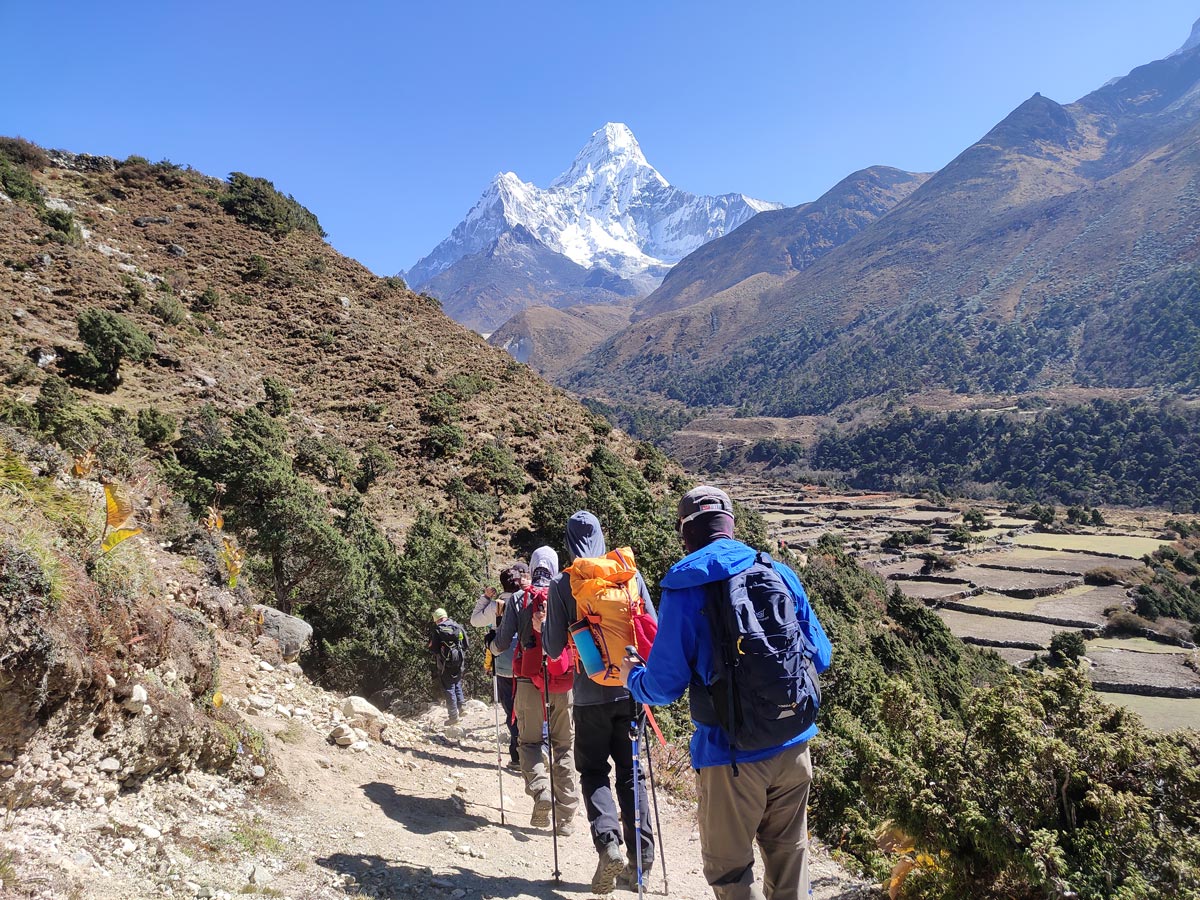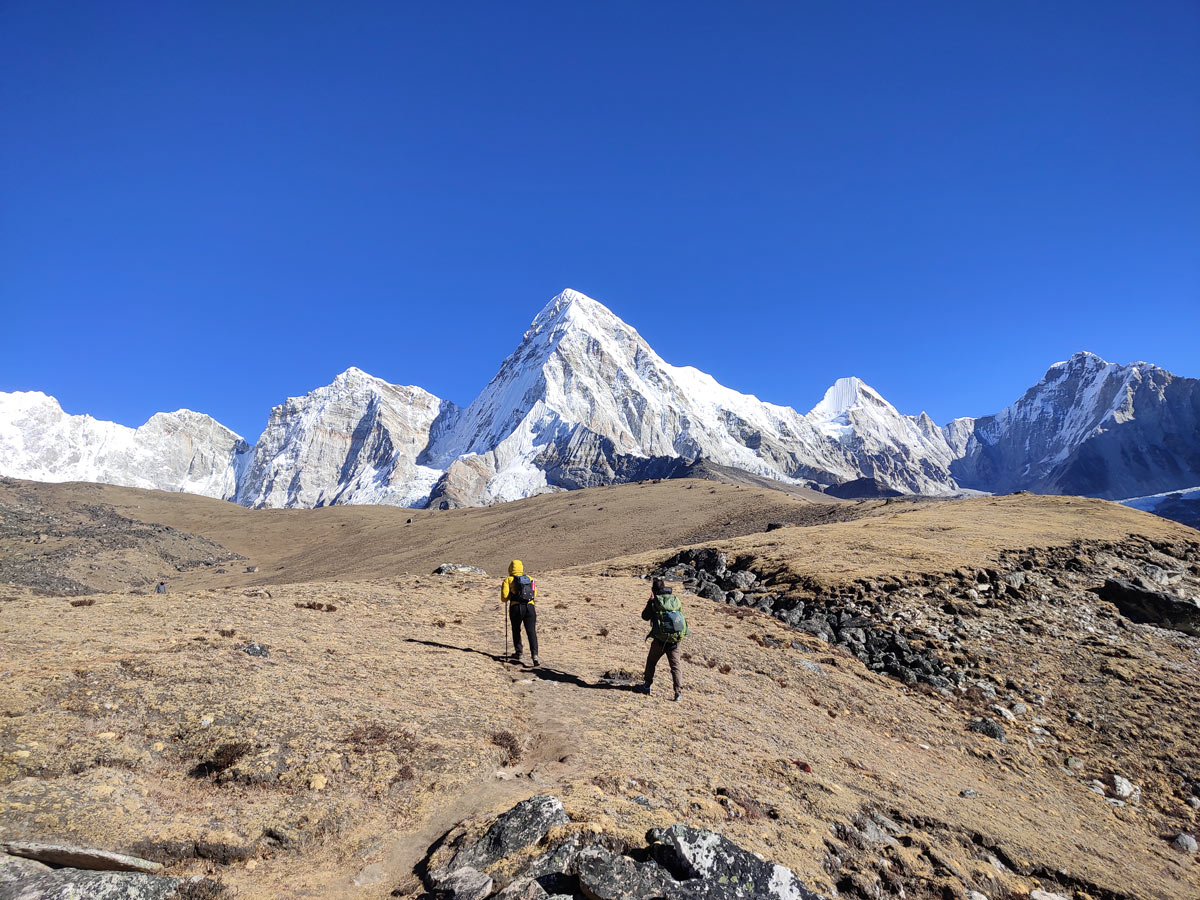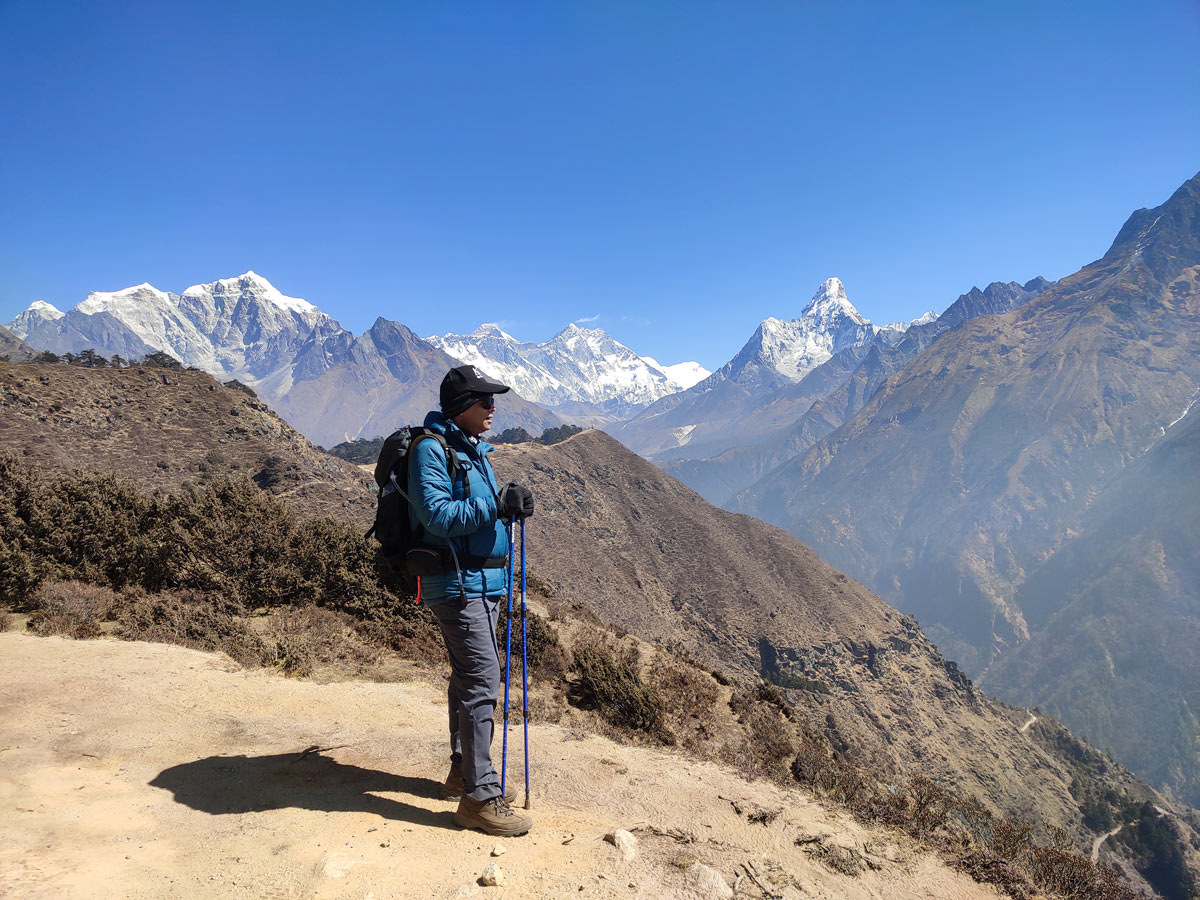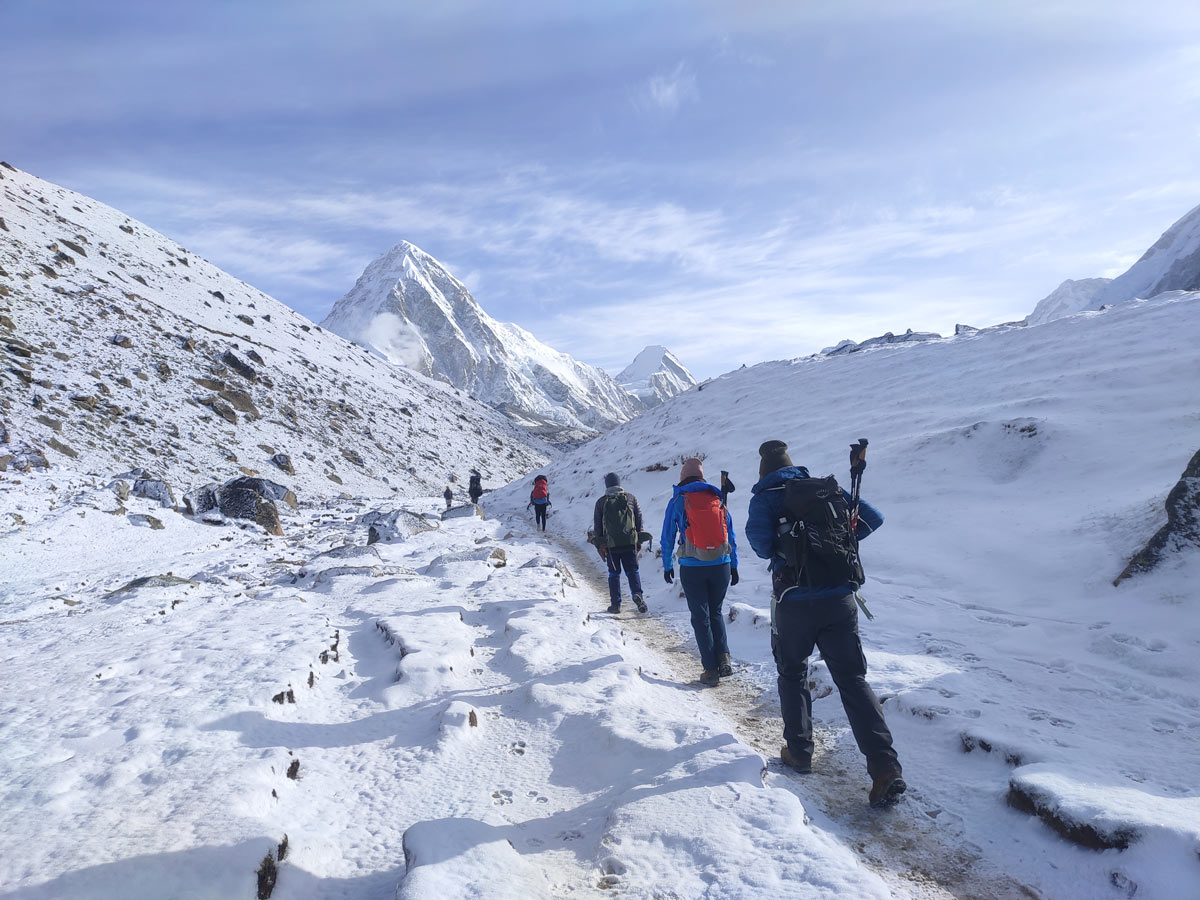With mesmerizing views of several Himalayan giants and a promise to take you to the foothills to the highest peak in the world, the Everest Base Camp trek is a dream journey for any adventure enthusiast.
Presenting you the chance to indulge in the brave Sherpa culture while traversing through the rugged parts of the Everest region, the EBC trek takes you closer towards touching the sky at the base of Sagarmatha.
However, amidst all these intriguing factors, questions related to health and hygiene often pop up making you rethink your adventure.
Therefore, in this blog, we dissect the nitty gritty of the basic hygiene facilities i.e. shower and laundry services during Everest base camp trek.
Understanding the Accessibility
The Everest Base Camp journey weaves its way through some of the remote corners of Nepal which might at times make you feel like your basic amenities too are a luxury in the region.
However, it is not as bad as it sounds. Contrary to popular beliefs, you won’t be roughing it up during your journey, all thanks to the teahouses that strive to provide you with comfort during your dream adventure.
Dotting the Everest Base Camp trail, the teahouses do provide facilities related to shower and laundry allowing you to maintain your hygiene. Delve deep to learn what you will actually be presented with in the EBC trek.
Showers
Shower facilities are not a luxury but at times a necessity to unwind after a long day of trekking in the EBC region. However, it is not guaranteed that you will get the desired kind of service on the trek.
Therefore, it is good to prepare yourself for what you are to encounter during the EBC trek.
Types of showers
While you are on Everest Base Camp adventure, you will notice a gradual shift in the type of shower facilities available as you ascend to higher elevations.
The EBC trek features a variety of showering facilities varying according to the location, altitude, and the infrastructures available over there.
While you are trekking on the lower altitudes of the trek, you will have access to better and well-facilitated teahouses and lodges. Therefore, you will have access to familiar comfort like gas-heated showers.
As you ascend, the gas-heated showers are replaced by solar heated showers heating the water with the golden rays of sun making it both feasible and eco-friendly option.
However, the availability is not guaranteed as it highly depends on the weather conditions, leaving the trekkers with lukewarm or even cold water on a cloudy or snowy day.
Moving closer to the sky in the locations near the Everest Base Camp, a bucket shower becomes your only friend as these places are more remote. Do not expect gas-heated showers or even solar heated showers.
For a bucket shower, the water is heated on a stove, and you are provided with a mug to pour the water. Embrace this rather rudimentary experience on your Everest adventure!
Availability
The availability of showering facilities on the Everest Base Camp trek sees a significant drop as you move from the starting point of the trek to the proximity of the very foot of Everest.
In the lower elevation areas like Lukla, Phakding, and Namche, showers are more readily available along with being comfortable and facilitated as these are the major resting spots for trekkers and climbers alike.
In these places, one can get options of solar as well as gas-heated showers. If you are traveling with Ace the Himalaya, you get teahouses with attached bathrooms which provide you access to convenient hot showers.
As you move beyond Namche, the trail gets remote and in places like Tengboche, Pangboche, and Dingboche, the trekkers can get access to running hot shower from gas geyser. However, these cost you additional charges.
When you go higher towards the Everest Base Camp, the focus shifts from facilitating you with luxuries to basic facilities required for survival and accommodation given the harsh climatic and altitude conditions.
Therefore, in areas like Lobuche, Pheriche, and Gorak Shep, expect nothing but a bucket shower and be prepared as that too might not be available sometimes.
The teahouses charge a high fee for these services as they take additional efforts. Also, it is advisable to refrain from taking showers in villages above Dingboche to prevent illness.
Another factor that influences the availability of hot showers on the Everest Base Camp trek is the season in which you are trekking.
If you are trekking the region in peak seasons, i.e. spring and autumn, the teahouses are better prepared and expect several guests due to which you might get the facilities. This might not be the case during the off season.
Showering Tips
When you are in a sensitive ecosystem like that of the Himalayas, it is important that you take certain things into consideration. Therefore, embrace these tips for your convenience as well as to contribute to the environmental safety of the region.
- Opt for environmentally friendly toiletries like biodegradable soap as these products break down easily while minimizing your environmental footprint.
- Minimize the frequency of showering as the resources in this region are limited and all fellow trekkers and locals must make the most out of the same.
- If you have an option, which is rare, opt for a solar heated shower as it is environmentally friendly.
- On days when you have an option like the acclimatization days, time your showers for warmer periods of the day. This reduces the chances of you falling sick.
- Embrace quick and effective shower practices like keeping the shower off while you are applying soap and scrubbing and rinsing off quickly.
- Pack essentials like dry shampoo and wet wipes with alcohol as they are a handy replacement on days when showers are scarce.
Laundry
In the challenging conditions of the Everest Base Camp trek, maintaining clean clothing might be a challenge. On the other hand, carrying numerous clothing items for this elaborate trek can make your backpack overweight.
However, worry not as although not up to your regular laundry expectations, suitable replacements do exist to tackle your laundry related issues.
Options for laundry
Dedicated laundry services are a rarity in the case of the Everest Base Camp trek. Although scarce, these facilities are available and more so in lower elevations as opposed to the high-altitude areas.
In the heart of the trek like Namche Bazaar and Dingboche, trekkers will find professional laundry services. However, these are mostly hand washed by the staff in other stops of the trek.
The most reliable option when it comes to laundry on the EBC trek is DIY. You read that right. A bit of elbow grease goes a long way as hand washing your own clothes is the most practical option in this region.
Although you might encounter some issues for drying like weather challenges, you can always embrace unique ways adding a hint of fun to your laundry related challenges. You will find trekkers drying off their laundry around the fireplace at dining halls. You too can add a t-shirt or socks in the shared dry space. Make sure to not take up too much space with your clothes.
Locations and Availability
Services related to laundry are mostly limited to hand washing in the Everest region due to multi-faceted challenges.
In lower altitudes like Lukla and Phakding, even though water and other resources are available, machine washing is not always possible due to lack of power.
However, teahouses offer laundry services where the staff hand washes your clothes. But you really need to rely on the weather for drying as you must leave the very next day.
Namche gives you a hint of relief acting like a laundry marvel amidst all these scarcities. Trekkers get access to several professional laundry services along with ample time to dry the clothes as Namche Bazaar is a popular acclimatization stop.
Prices vary depending on the establishment as well as the cloth. For instance, t-shirts can cost less amount as compared to other clothing pieces of larger size. Pricing here is done based on per item.
From Namche onwards, laundry services again switch to handwashing. In places like Tengboche and Pangboche, the services are not reliable, and trekkers can face issues with drying their clothes.
Upon arrival at Dingboche, the trekkers are once again be met with good laundry services similar to that of Namche with per piece cost. However, this being a more remote area and at higher altitude, prices are higher than Namche.
When you near the Everest Base Camp, the priorities change from laundry services to being able to access more important needs related to basic survival as the resources are extremely limited and scarce.
Therefore, in places like Pheriche, Lobuche, and Gorakshep, expect no laundry services as the availability of these services drops significantly given the challenging altitude.
Besides professional services, you can always opt for DIY as it is more reliable, feasible, and budget friendly. You can get water in teahouses or even do sink washing.
Laundry Tips
For a more hassle-free handling of laundry while on your Everest adventure, adhere to the tips below:
- While packing for the EBC trek, focus highly on layering the clothes as that way you can make most of the limited clothes that you are carrying while also reducing the need for washing.
- Opt for odor resistant and quick drying materials so that you don’t have to wash them as frequently to maintain hygiene.
- Carry biodegradable detergent to minimize your environmental footprint.
- Rather than washing all your dirty laundry together, wash it in batches every few days saving your energy as well as resources.
- Sink washing is a commonly seen practice on the EBC trail. You can also carry along a wash bag for more convenience.
- Prepare yourself to wash the clothes in cold water as you might not get hot water for laundry at tea houses. Seek permission while using the water.
- Drying clothes can be a challenge inside the tea houses. So, include laundry in your schedule based on your itinerary.
- Carry laundry drying essentials like pegs and a lightweight clothing line if possible.
- Try to reduce your laundry needs as much as possible as it allows in waste management in the Himalayas along with saving the resources and your energy.
Cost and Payment
Given the scarcity of resources during the Everest Base Camp trek, especially at higher elevations, the shower and laundry services on the trail come with an additional charge in most of the places.
The charges vary depending on the location, altitude, weather, remoteness, resources, as well as the method opted for the service. Remember, the higher you go, the more expensive everything gets.
As far as showers are concerned, the cost is not much of a problem at lower altitudes for those traveling with Ace the Himalaya as we provide you with attached bathrooms with readily available hot showers without extra charge.
When you move beyond these facilitated areas, the attached bathroom facility starts decreasing along with the convenient hot showers.
In places like Tengboche, Pangboche, and Dingboche, expect to pay around USD 7 to 10 per person for each gas-heated shower. While the method changes into a bucket shower at Pheriche, the charge of USD 8 remains constant.
In areas closer to the base camp like Lobuche and Gorakshep, the same bucket shower can cost you somewhere between USD 12 to 15 per bucket. So, if you are planning to take a shower, be prepared for splurging on it.
When it comes to laundry, the pricing is usually done on a per-piece basis depending on the size of the clothing material. Professional laundry services are available only in Namche and Dingboche.
In Namche, the price to wash a t-shirt is 1 USD and it varies based on the size of clothing. In Dingboche, the pricing system is per piece too, but expect to spend more money here given the limited resources.
When opting for handwashed laundry services at teahouses, the pricing depends on the specific establishment and the resources available in the location.
The costs for all these services throughout the trek might look normal at a cursory glance but when combined they can add a significant amount to your budget.
Therefore, it is important that you plan and budget for these expenses too so that you are not caught off guard during the trek.
Additional Tips
Even when you are mindful of the things listed above, embracing these bonus tips listed below can always come in handy and make your experience more convenient and hygienic.
- Although laundry options are available, it is recommended that you pack enough clothes that last you throughout the trek if you are met with situations where you can’t wash them.
- While it is okay to carry limited outer layers and repeat them, make sure to carry lots of underwear and socks to maintain your basic hygiene.
- Pack quick drying and lightweight clothing to avoid overloading your luggage with clothes.
- Don’t stress yourself a lot over repeating the outer layers as there is no judgement on this trek because all the trekkers are on the same boat as yours.
- As you might encounter problems with drying your clothes in other places, the best option for a convenient laundry day is to wash them in Namche, Dingboche, or Kathmandu.
- Do not wash clothes directly into any lake or natural water resources available on the trek.
- Be prepared for days when you might have to dry your clothes on top of your backpack as you walk because your clothes might not dry in the teahouse given the harsh climatic conditions.
- Indulge in responsible water usage as the water in these high-altitude areas is limited as it is.
- Avoid over-hot water showers. This might take you by surprise, but over-hot showers can aggravate altitude sickness by causing symptoms like pulmonary edema.
- Carrying a travel sized fabric refresher spray can be a lifesaver during some desperate situations along the trek.
- Embrace creative ways of maintaining hygiene along the trek featuring limited resources. Adhere to practices helping with basic hygiene such as changing into clean clothes while sleeping.





